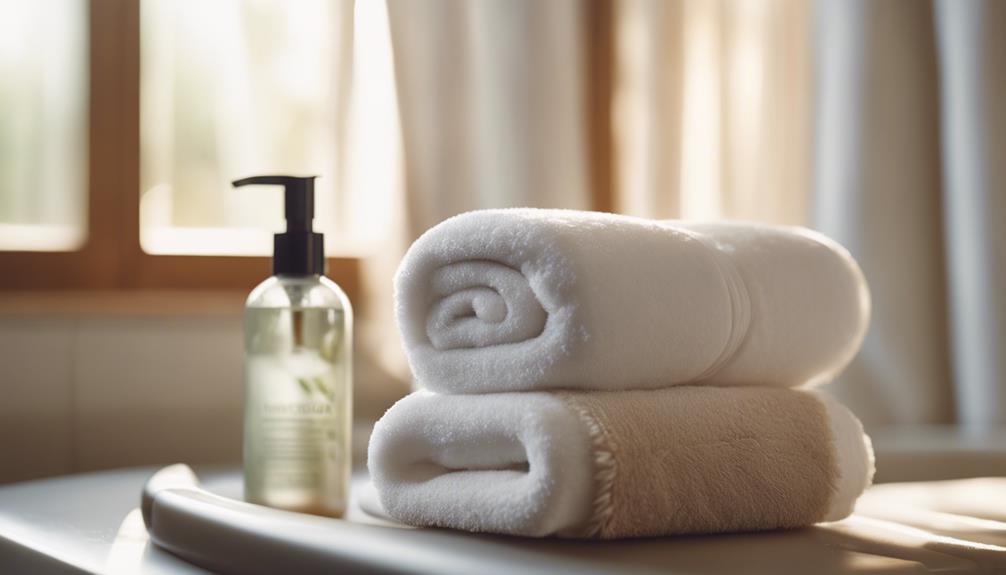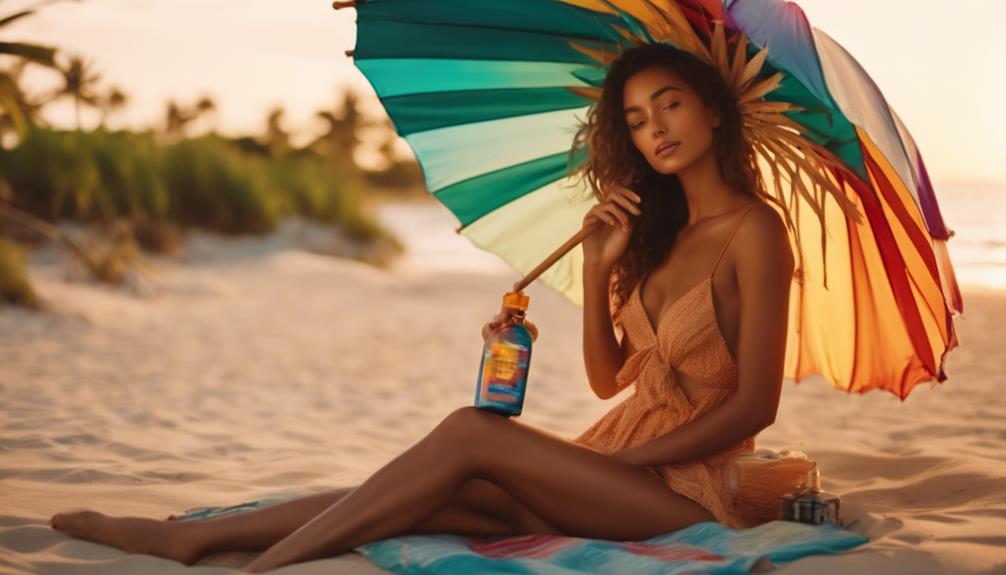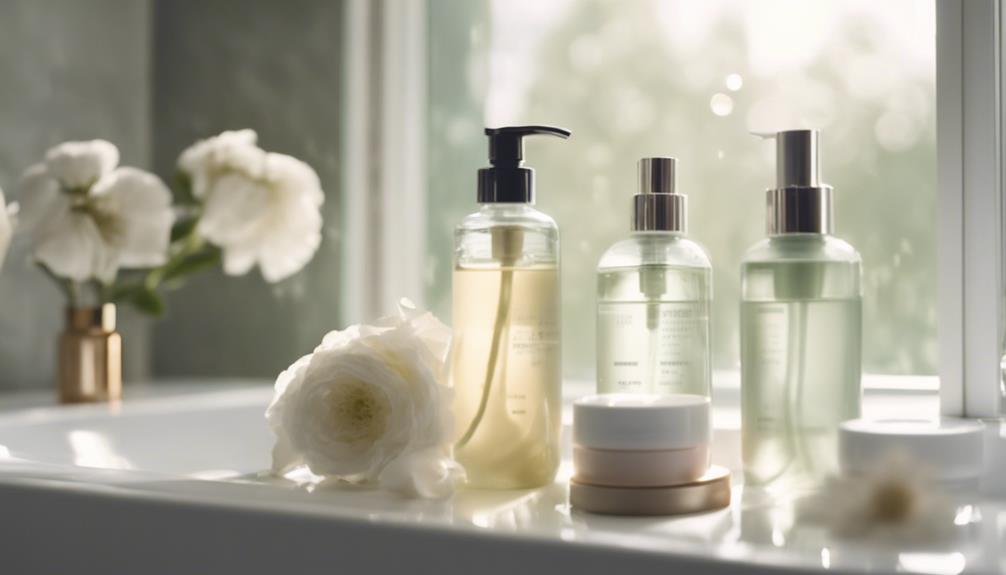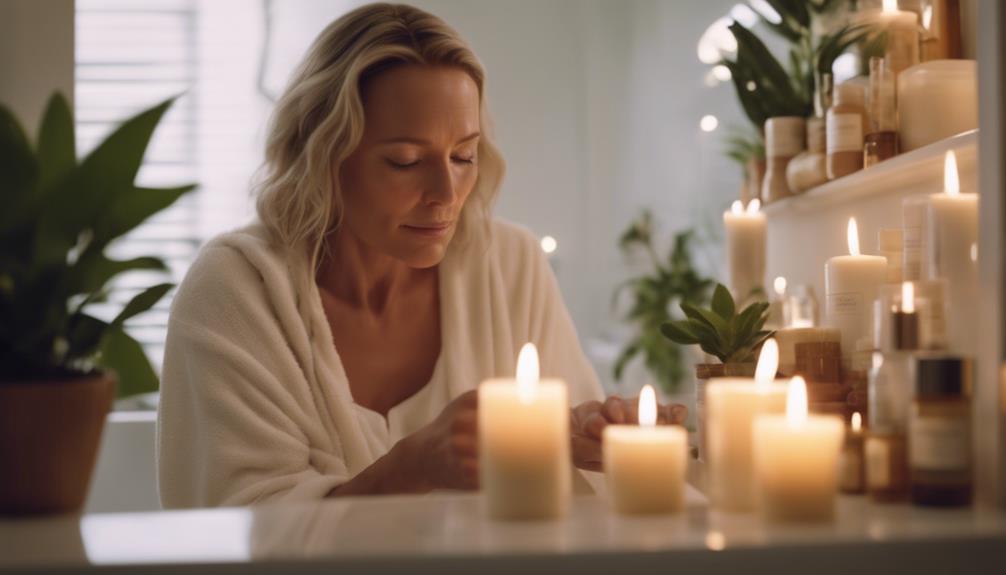You can achieve a perfect tan without damaging your skin by first understanding your skin type. Then, prepare your skin by exfoliating and moisturizing the day before for optimal results. Remember to always use SPF whenever you are outdoors, even on cloudy days – it’s like a superhero cape for your skin! After tanning, maintain that glow by using a nourishing moisturizer and mild cleanser; avoid hot showers. If you prefer sunless options, there are fantastic products like mousses and sprays that can give you a sun-kissed look without any risks. Interested in learning more tips?
Key Takeaways
- Exfoliate and hydrate your skin 24 hours prior to tanning for optimal absorption and a smoother tan.
- Choose sunless tanning products like mousse or spray for a natural glow without UV exposure.
- Always apply SPF sunscreen to protect your skin from harmful UV rays, even during tanning sessions.
- Limit tanning sessions and monitor your skin for any changes to prevent damage and maintain health.
Understanding Your Skin Type
Understanding your skin type is essential for choosing the right tanning products that will enhance your glow while minimizing risks.
Think of your skin type as a special club—each one has its own preferences!
If you've got normal skin, you can explore a wider range of tanning options.
Fair skin types? Stick with light, cool-toned bronzers, while medium types shine with warm, golden hues.
Deep skin types, you'll want rich bronzers with red or orange undertones.
Plus, don't forget about added ingredients like antioxidants; they're like a superhero for your skin!
By knowing your type, you're not just picking a product, you're crafting a glorious, sun-kissed look that's uniquely you.
Preparing Your Skin

To achieve the perfect tan, prepping your skin is essential, so start by exfoliating 24 hours before your tanning session. This helps remove dead skin cells, ensuring an even application and a longer-lasting glow. After exfoliating, hydrate your skin with a light moisturizer, but avoid heavy creams on tanning day to let the product absorb better.
Here's a quick table to keep track of your prepping steps:
| Step | When | Tips |
|---|---|---|
| Exfoliate | 24 hours before | Use a gentle scrub |
| Hydrate | Day before | Light moisturizer only |
| Avoid heavy creams | Tanning day | Stick to light lotions |
| Patch test products | 48 hours before | Check for reactions |
| Stay hydrated | Daily | Drink plenty of water |
With these easy steps, you're on your way to a flawless tan!
Post-Tan Care Essentials

How can you maintain your beautiful tan after the session? It's all about post-tan care!
You'll want to keep your skin hydrated and nourished, so it stays glowing and radiant. Here are some essentials to help you keep that stunning color:
- Moisturizer: Slather on a rich, hydrating lotion that locks in your tan.
- Gentle Cleanser: Use a mild soap to wash without stripping color.
- Hydrating Mist: Spray your skin with a revitalizing mist for an instant boost.
With these simple tips, you can keep your tan looking fabulous for longer!
Plus, who doesn't love that sun-kissed glow? Embrace it!
Tanning Methods Explained

Tanning methods vary widely, and choosing the right one can make all the difference in achieving your desired glow. You've got options!
Traditional tanning beds mix UVB and UVA rays for a balanced tan, while high-pressure beds focus on UVA for a deeper, longer-lasting effect. Think of it like choosing between a cozy blanket or a warm hoodie—both keep you warm, but in different ways!
Stand-up booths can be super fun, too, giving you an all-around tan without the awkward lying down. Just remember, each method has its perks, and it's essential to pick one that suits your skin type and comfort level.
Have you ever tried a tanning bed? It's like a mini-vacation in just a few minutes!
Importance of Protective Gear

Wearing protective gear is essential for safeguarding your skin while enjoying the tanning process. Just like a superhero needs their cape, you need your gear to keep your skin safe and glowing! Think of it as your personal shield against UV rays and damage.
- SPF sunscreen to block harmful rays and keep your skin hydrated
- Stylish sunglasses that protect your eyes while you soak up the sun
- A wide-brimmed hat to shield your face and neck from sunburn
Safe Tanning Practices

To enjoy the sun safely, it's important to adopt safe tanning practices that protect your skin from harmful UV exposure.
First, always wear SPF, even on cloudy days—yes, UV rays can be sneaky! Limit your tanning sessions to avoid turning into a lobster, and remember to check your skin for any changes regularly.
If you're using tanning beds, follow the manufacturer's guidelines. Did you know that timing is key? Start with short sessions and gradually increase your time.
And don't forget protective gear, like hats and sunglasses, to keep your face looking fabulous!
Exploring Alternative Tanning Options

Consider sunless tanning products as a fantastic way to achieve a natural-looking glow without the risks associated with UV exposure. Imagine stepping out with skin that gleams like the sun, all without a single sunburn or peeling.
Here are some great alternatives you might enjoy:
- A velvety mousse that glides on like a dream, giving you a sun-kissed look.
- A tinted lotion that instantly warms your skin, making you feel like you just returned from the beach.
- A spray tan that envelops you in a silky mist, perfect for quick applications.
With these options, you can flaunt a flawless tan while keeping your skin safe and happy!
Frequently Asked Questions
Can I Tan if I Have Sensitive Skin?
Yes, you can tan with sensitive skin! Just choose gentle, hypoallergenic products, patch test them first, and limit exposure time. Always moisturize after tanning to soothe your skin and maintain your glow.
How Often Can I Safely Tan in a Week?
You can safely tan two to three times a week. Curiously, studies show that just 15 minutes of sun exposure can boost your mood greatly, so enjoy those sessions while keeping skin health in mind!
What Should I Do if I Get Sunburned?
If you get sunburned, cool your skin with aloe vera or a soothing lotion. Drink plenty of water, avoid further sun exposure, and let your skin heal naturally—don't pick at peeling skin!
Are There Any Foods That Enhance Tanning Results?
Imagine your skin soaking up the sun's golden embrace. Foods rich in beta-carotene—like carrots and sweet potatoes—can enhance your tan, giving you a radiant glow while you bask in that warm, inviting light.
How Can I Remove Self-Tanner Stains From My Skin?
To remove self-tanner stains, gently exfoliate your skin using a loofah or scrub. You can also try applying baking soda paste or a high-quality body wash to lift the color, rinsing thoroughly afterward.
What are the best methods for achieving a flawless tan without damaging the skin?
Achieving a flawless tan without damaging the skin can be done through flawless tanning techniques mastered. Using a high-quality self-tanner, exfoliating before application, and moisturizing regularly can help achieve a healthy and natural tan. Additionally, wearing sunscreen and seeking shade can protect the skin from harmful UV rays.
Conclusion
So, there you have it! Achieving that sun-kissed glow is like painting a masterpiece—each step matters, from knowing your skin type to choosing the right products.
Remember, a flawless tan isn't just about looking good; it's about keeping your skin happy and healthy.
Think of your skin as a canvas, deserving of the best care.
So, gear up, follow these tips, and strut your stuff with confidence—your radiant, damage-free tan is just a few steps away!









